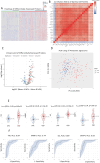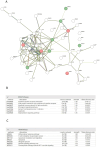Senescence Biomarkers CKAP4 and PTX3 Stratify Severe Kidney Disease Patients
- PMID: 39404377
- PMCID: PMC11475272
- DOI: 10.3390/cells13191613
Senescence Biomarkers CKAP4 and PTX3 Stratify Severe Kidney Disease Patients
Abstract
Introduction: Cellular senescence is the irreversible growth arrest subsequent to oncogenic mutations, DNA damage, or metabolic insult. Senescence is associated with ageing and chronic age associated diseases such as cardiovascular disease and diabetes. The involvement of cellular senescence in acute kidney injury (AKI) and chronic kidney disease (CKD) is not fully understood. However, recent studies suggest that such patients have a higher-than-normal level of cellular senescence and accelerated ageing.
Methods: This study aimed to discover key biomarkers of senescence in AKI and CKD patients compared to other chronic ageing diseases in controls using OLINK proteomics.
Results: We show that senescence proteins CKAP4 (p-value < 0.0001) and PTX3 (p-value < 0.0001) are upregulated in AKI and CKD patients compared with controls with chronic diseases, suggesting the proteins may play a role in overall kidney disease development.
Conclusions: CKAP4 was found to be differentially expressed in both AKI and CKD when compared to UHCs; hence, this biomarker could be a prognostic senescence biomarker of both AKI and CKD.
Keywords: acute kidney injury; biomarker; chronic kidney disease; machine learning; senescence.
Conflict of interest statement
The authors declare no conflicts of interest.
Figures




References
Publication types
MeSH terms
Substances
LinkOut - more resources
Full Text Sources
Medical
Miscellaneous

